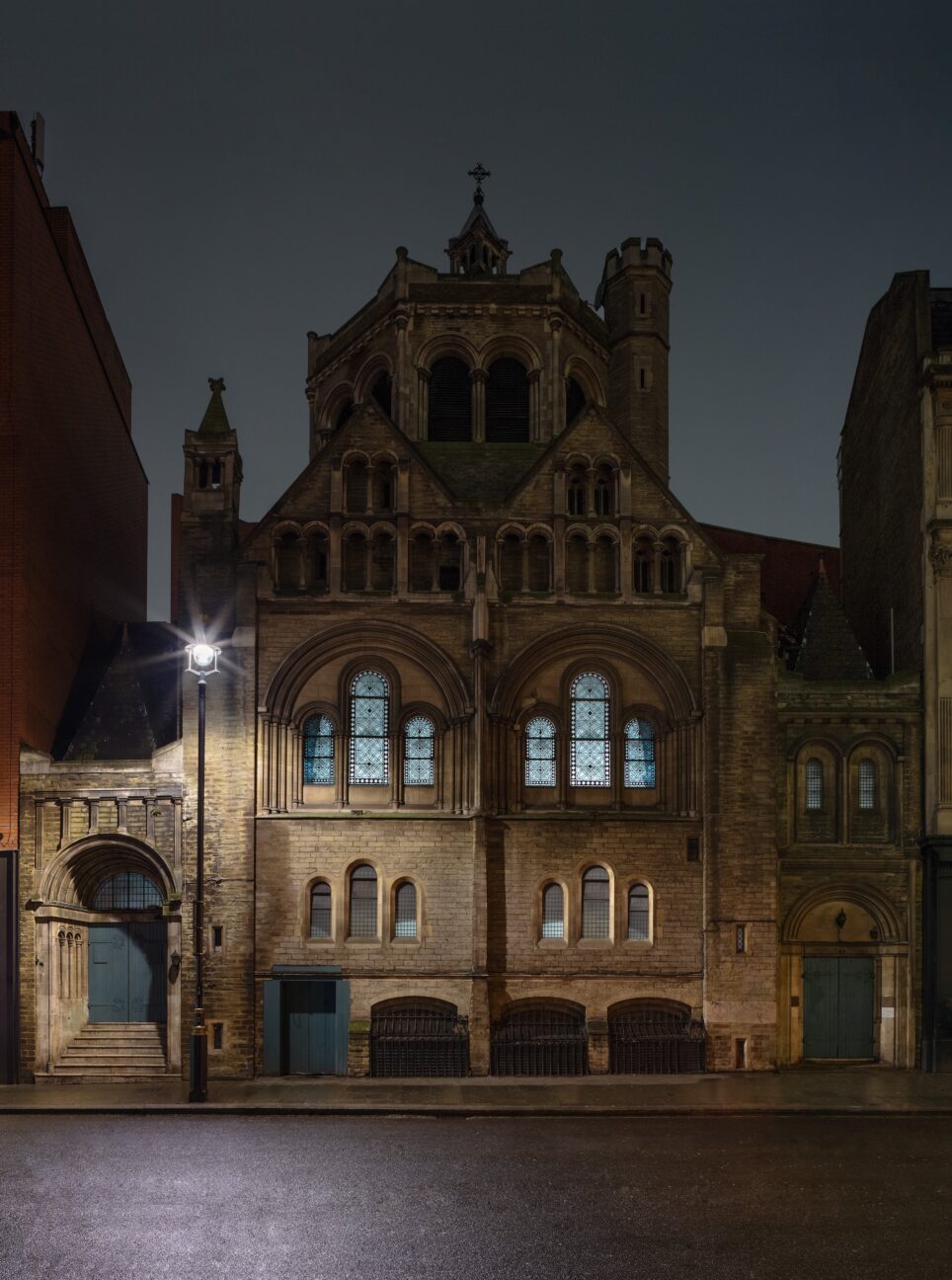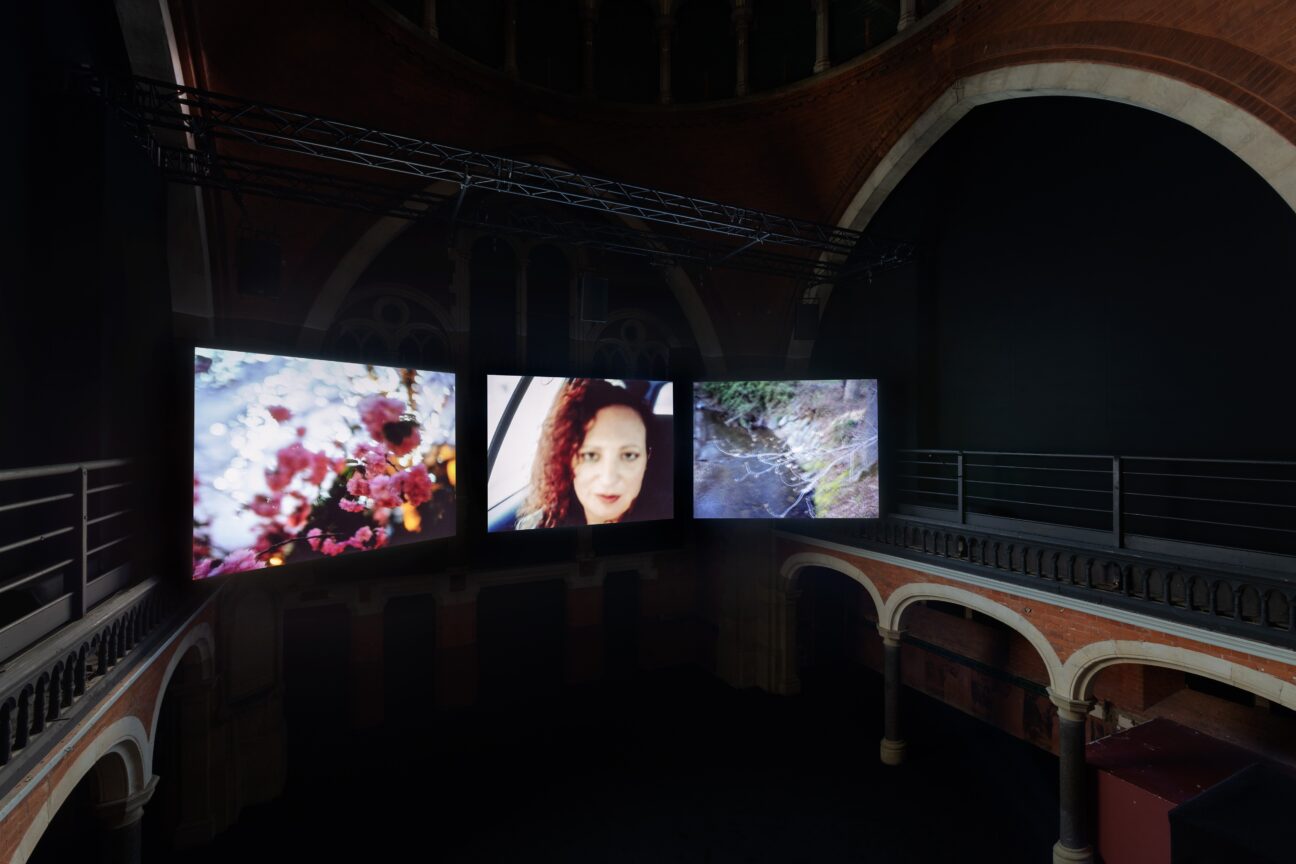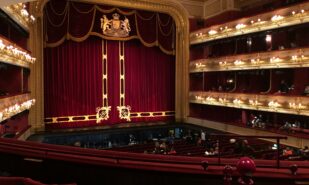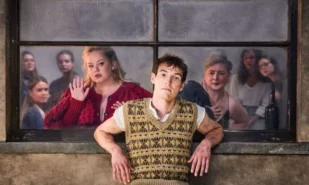Last year, the renowned gallerist Larry Gagosian launched a series of exhibitions in non-traditional spaces by showcasing early works by Christo in a Georgian house on Princelet St. This approach is continued with Sisters, Saints, Sibyls, a video installation by American artist Nan Goldin, displayed within the historical setting of a former chapel at Charing Cross.
Archeology of the Marginal: Sisters, Saints, Sibyls

This Welsh chapel has experienced numerous metamorphoses: following the cessation of religious services in 1983, it was repurposed into the notorious Limelight club, frequented by Andy Warhol, Boy George, Rod Stewart; in its more recent past, the building has been squatted repeatedly. Such a context further intensifies the poignancy of situating Goldin’s provocative work here, as her career has been consistently engaged with drug-addicted friends, transvestites, and other marginalized figures. Her work, closely associated with themes of gender, provocation, and non-conformity, depicts a world of rumpled beds and seedy motels, replete with overflowing ashtrays and vestiges of shame transcended. Goldin is also distinguished for her activism against “Big Pharma,” leading to the Sackler family’s dissociation from institutions such as the British Museum, MoMA, Louvre, and Tate Gallery. Her efforts to hold Purdue Pharma accountable for its role in her late-onset addiction to OxyContin are dramatized in Laura Poitras’s All the Beauty and the Bloodshed, an award-winning documentary honored with the Golden Lion at the Venice Festival in 2022.
Sisters, Saints, Sibyls is presented as a 3-channel projection, once more echoing the venue’s overtones, as the triptych format is traditionally associated with religious art. The film represents an attempt to reconstruct the fragmented life story of Nan’s older sister, Barbara. Their mother, convinced that Barbara’s defiance, sexual deviance, and dubious friends were unbecoming of a “proper girl,” consigned her to psychiatric “reform.” Yet such impositions often incite even fiercer rebellion among the teenagers. A cascade of familial traumas culminated in Barbara’s suicide at 18 and Nan’s subsequent escape from home into an impoverished bohemian existence.

At the film’s outset, another parallel to religious iconography is drawn: the narrator tells the story of Saint Barbara (accompanied by Jefferson Airplane’s White Rabbit), who was infamously beheaded by her own parent for refusing to abandon her Christian faith. Evidently, in Goldin’s perspective, her elder sister embodies a similar martyrdom, persecuted for convictions that should not be classified as “normal” or “abnormal” in any way.
Goldin pursues truth in her own tangled ways, pushing through the thorns of anguish, oppression, and dislocation. The visual and auditory elements of the film seldom harmonize; the contrasts—family photographs against psychiatric report readings, suburban scenes amid sounds of swearing and insults—sharpen the perception of narrative’s intrinsic themes.
Sisters, Saints, Sibyls represents a form of cinematic archaeology where one must burst into the most inaccessible strata of the past and face what has long since perished. This endeavor is as unsettling for the audience as it must have been for the researcher. Relics of others’ destinies are unearthed, with perhaps the most commendable aspect of this exploration being its adherence to scientific detachment, free from any inclination towards judgment, critique, or regret. One could argue that Nan Goldin, the New York Sibyl, asserts the primacy of will and life, but she does so via negativa. The involuntary testimony of a prayer to Saint Barbara in the former Welsh chapel evokes a sentiment of guilt akin to that experienced when delving into the pages of a private diary.





